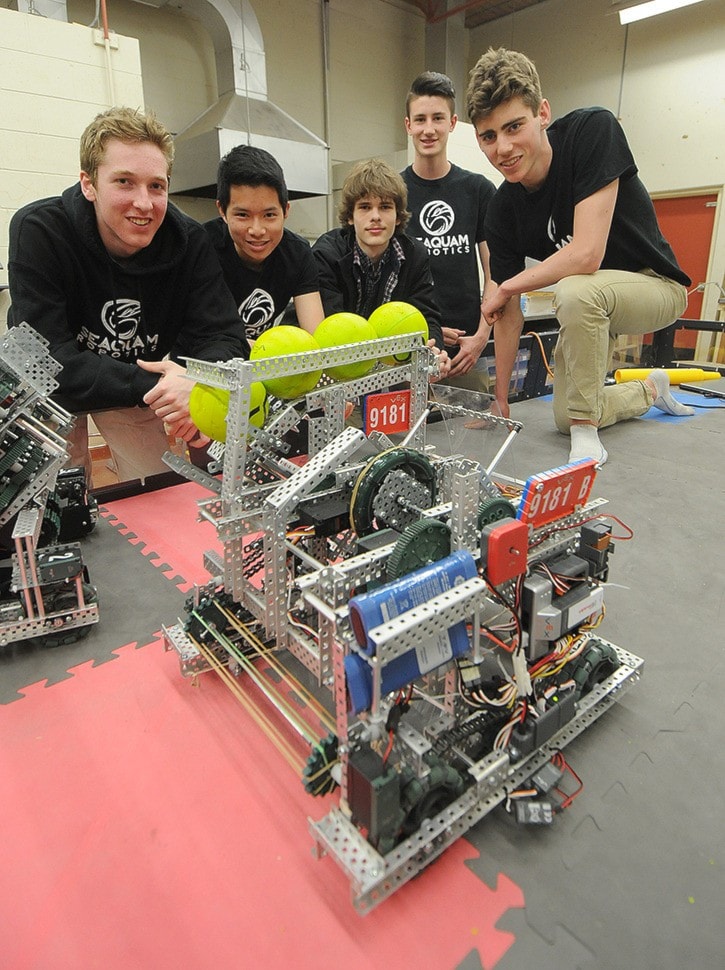Five robotics wiz kids from Seaquam Secondary in North Delta are headed to the pinnacle of high school robotics competition in Louisville this month.
Team members Josh Zindler, Dawson Pasin, Trevor Chow, Michael Milic (all in Grade 12) and Grade 10 student Bradley Schellenberg – along with their mechanical creation 9181B – punched their ticket to challenge the best high school teams from across the globe after a recent win at the provincial championships held at Seaquam.
They'll now head to the 2016 VEX World Robotics Competition, in Louisville Kentucky, April 20-23.
This is the third year the team has competed in the provincial competition, which was held at their school, placing sixth two years ago and not placing last year. This is the first time the school has qualified for the world stage.
“In Grade 9 we were introduced to this program by students who are graduated now,” said Milic, “and about 15 students decided to give it a try and it’s really just built from there.”
The challenges change every year and each year the teams are given the same box of supplies from VEX Robotics. This year the team was tasked with building a robot that could shoot rubber balls into a net, with the team scoring the most balls coming out on top.
Speed, accuracy and weight are key and by spending hours testing various motors, and pre-programming the computers to locate and launch the balls as quickly as possible, the team was able to fine tune their machine to perform all the tasks as efficiently as possible.
Throughout the year, each robot has been torn apart and rebuilt at least five times.
The competition challenge has different stages, one being a 15 second Autonomous Stage where each team uses two robots each to locate the balls placed in pre-set positions on the field of play, pick them up and then launch them into the triangular shaped basket using only sensors and computer pre-programming.
In the second challenge, the robots are controlled by one of the team members using a hand-held radio controller.
Each match pits one team against another on the same field with the winning team moving on to the next round.
Alliances can be formed between squads that requires teamwork and strategy.
“In the provincial final, what made them so successful was their flywheel. It was much more accurate than the competition and they also added a punch that was able to shoot the balls much faster than the wheel,” explained teacher Bryce Hamade.
Often, design ideas come from the students through research, while other times they try to incorporate successful designs used by other competitors. However, creating the most efficient machine is achieved through trial and error, continual modifications and team consensus.
“This has definitely helped me find my passion,” said Pasin. “I’ll hopefully go into engineering.”
Though much of the design requires an understanding of physics and projectile motion, the students all agree you don’t need to be a math genius to be part of the team, with each member contributing a different, valuable skill set.
“I have learned a lot about teamwork and that’s such a big part of engineering,’” said Schellenberg. "We all have our areas, from electrical to mechanical to software, but we’ve been able to produce a robot that we’re really happy with.”
The Seaquam team is fundraising to offset travel costs for the Kentucky trip. For more information, check http://bit.ly/1qmOtMT
